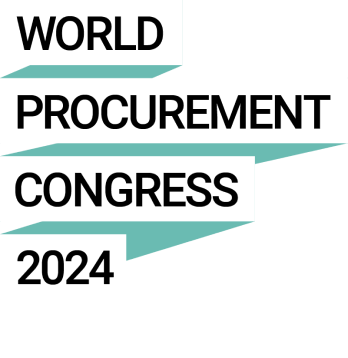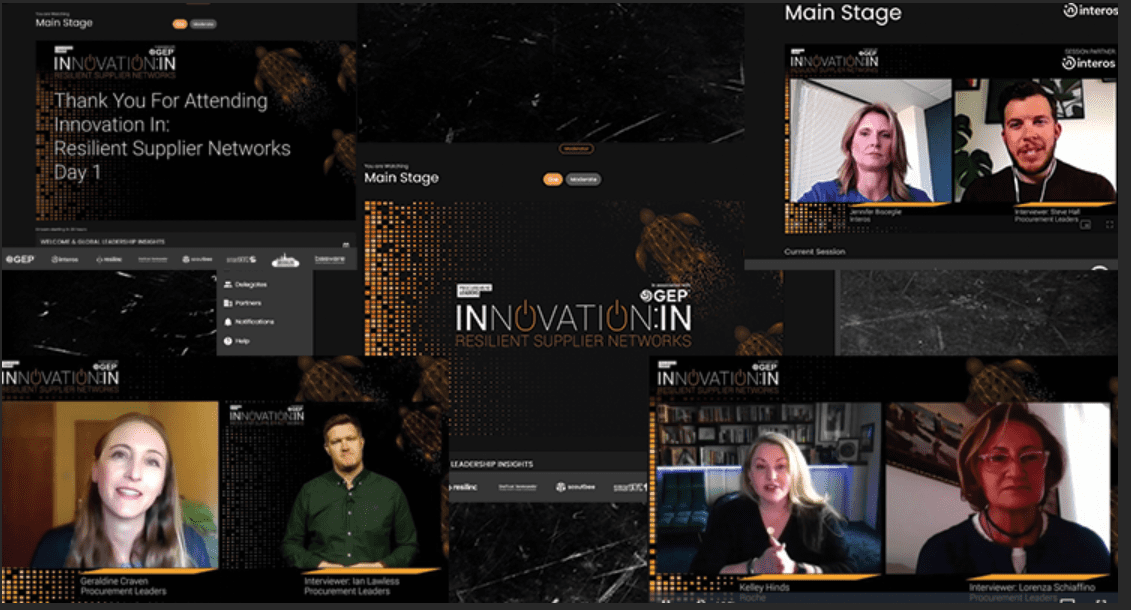For all those procurement functions turning their organisations into resilient entities, here are our three key takeaways of day 1 of our Innovation:In: Resilient supplier networks virtual event.
Virtually every speaker touched upon the topic of visibility, not surprising as we have been talking about it for years. However, the weight we put on it has changed significantly. Areas with no supply chain visibility are now flagged as ‘risks’ rather than a ‘tactical issue’, and as our visibility increases, proactive risk management becomes the norm. More interestingly, we are learning about additional benefits and considerations of this improved visibility.
Pranav Padgaonkar, Senior Director Consulting at GEP, talked about collaboration expanding on multiple levels in alignment with the expanding visibility: “Supply collaboration used to be talking with suppliers and securing next year’s supply, a collaboration that focuses on visibility now incorporates collaboration activities in areas such as capacity planning, master data and quality inspections”. The more insights into our suppliers and the supply chain we get, the more we can act on additional opportunities we were previously unaware of.
However, we should not forget that this goes both ways, suppliers also want to enhance their forecasting accuracy. Visibility therefore should benefit both sides, something we see becoming the norm in contracting, where buyers and suppliers agree on a base level of visibility requirements and expectations for each side beforehand.
Resiliency is more than visibility
Transparency and visibility in our supply chains is often the first thing that comes to mind when we talk about increasing resiliency, especially considering recent developments in technology. However, technological developments like AI can be used in many more ways, as Gregor Stuhler, CEO & Founder of Scoutbee and Michael Gordon, Senior Expert Product Development and Supply Chain at McKinsey & Company, highlighted in their conversation. They explained that resiliency is strongly dependent on the ability to be flexible in times of uncertainty. AI can provide the solution to flexible supply sourcing by helping category managers keep on top of any market developments as well as identifying additional suppliers in the market globally when necessary.
As Gregor said “Instead of focusing on a few suppliers and visibility, you can create competitiveness and have a range of sourcing options, continuously identifying and assessing suppliers around the globe”. Michael added to this, pointing out that it’s all about speed to find new suppliers, a process that with technology should only take hours instead of days.
In a new normal where procurement teams are focused on supply availability and bringing new products to market, AI can provide category managers with the super powers they need to be flexible and resilient, quickly identifying new suppliers at times where speed is of the essence.
Resiliency relies on your people and processes
Throughout the day, organisations stressed the importance of people and processes to achieve resiliency. It requires the right people brought together to develop new processes and it requires processes that consider the people turning policy in to practice to ensure its success.
As Markus Mirgeler, CPO at Clariant, rightfully pointed out “We cannot flood our category managers with data, we need to first help them identify and prioritise the relevant information and then ensure they take the appropriate next steps”. Nolan Smith, VP Global Supply Management at Corning, added to this by explaining category managers must be able to connect the dots between risk data and the possible impact on the business.
When it comes to the actual teams responsible for defining and implementing risk management processes, diversified teams appear to be a major driver for success. One CPO highlighted the importance of building cross-functional teams that mirror the interconnected nature of the activities. For example, where the aim is to improve risk management, an SRM expert will always be included and vice versa.
More out-of-the-box, Kelley Hinds, Global Head of Risk and Sustainability at Roche, shared how she built her team by selecting people based on their ability to solve problems in areas of unknown territory rather than procurement experience. “My team works from 6 different countries, speaks 9 different languages and consists of people with backgrounds in areas as law, engineering and procurement. The one thing they have in common is that they aren’t afraid to challenge topics we have no answers for yet and can turn theory into actionable processes.”
We can only end this recap by quoting Jennifer Bisceglie, CEO and Founder of Interos: “What better time to be in procurement than now. Your responsibility and the people asking you questions have raised to the board level. Procurement is now first in line to protect the company in a crisis and that should excite all of you.”


















